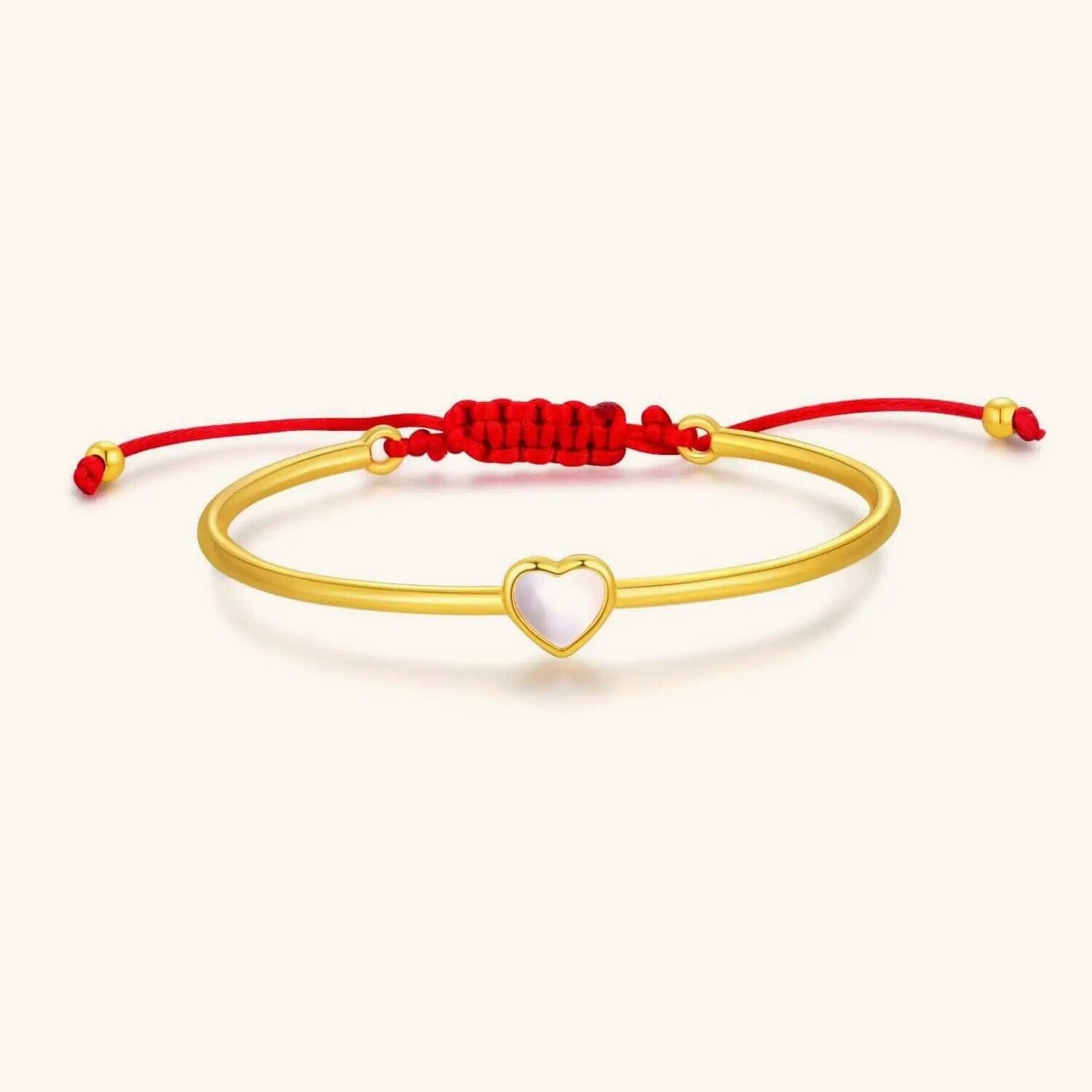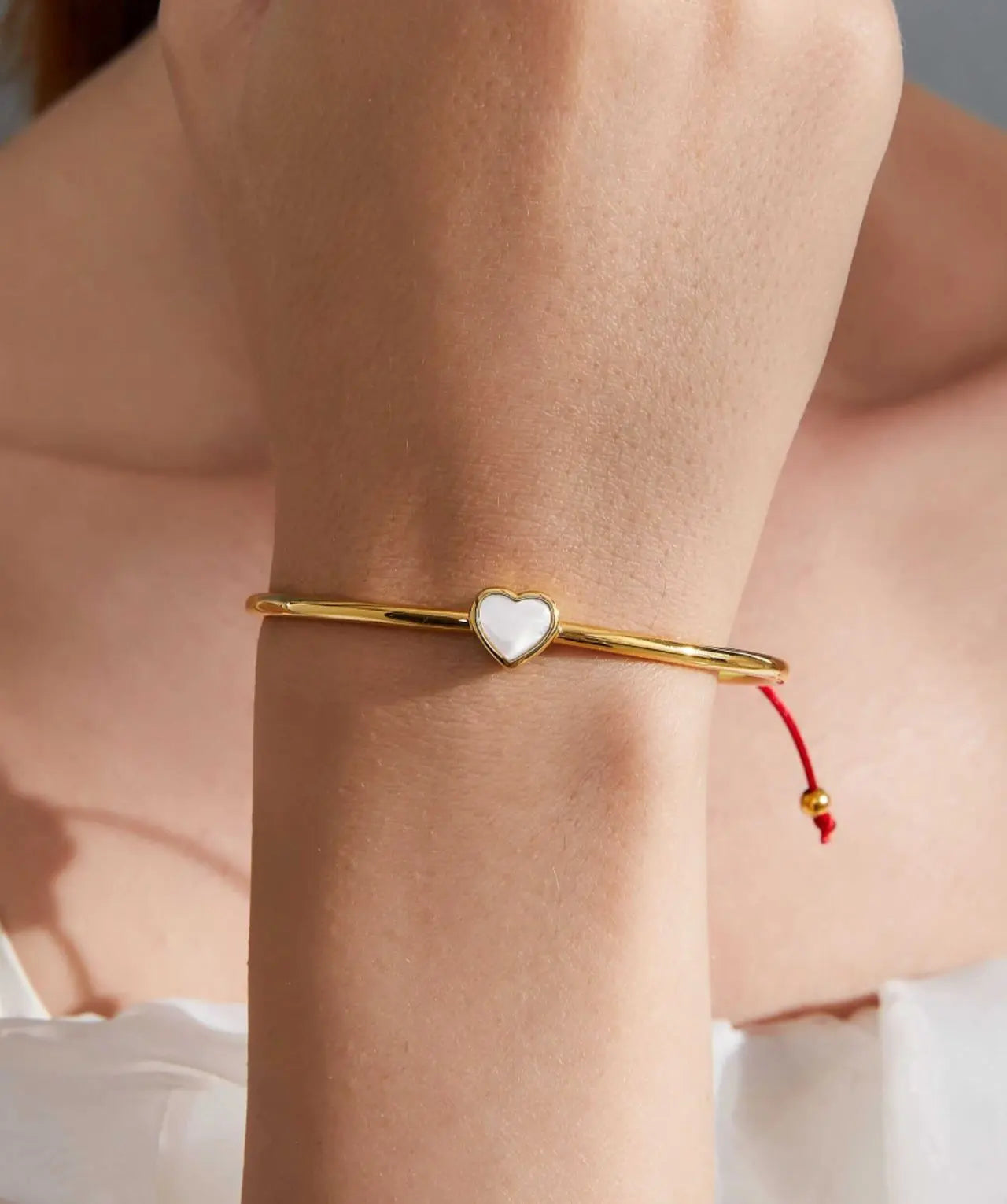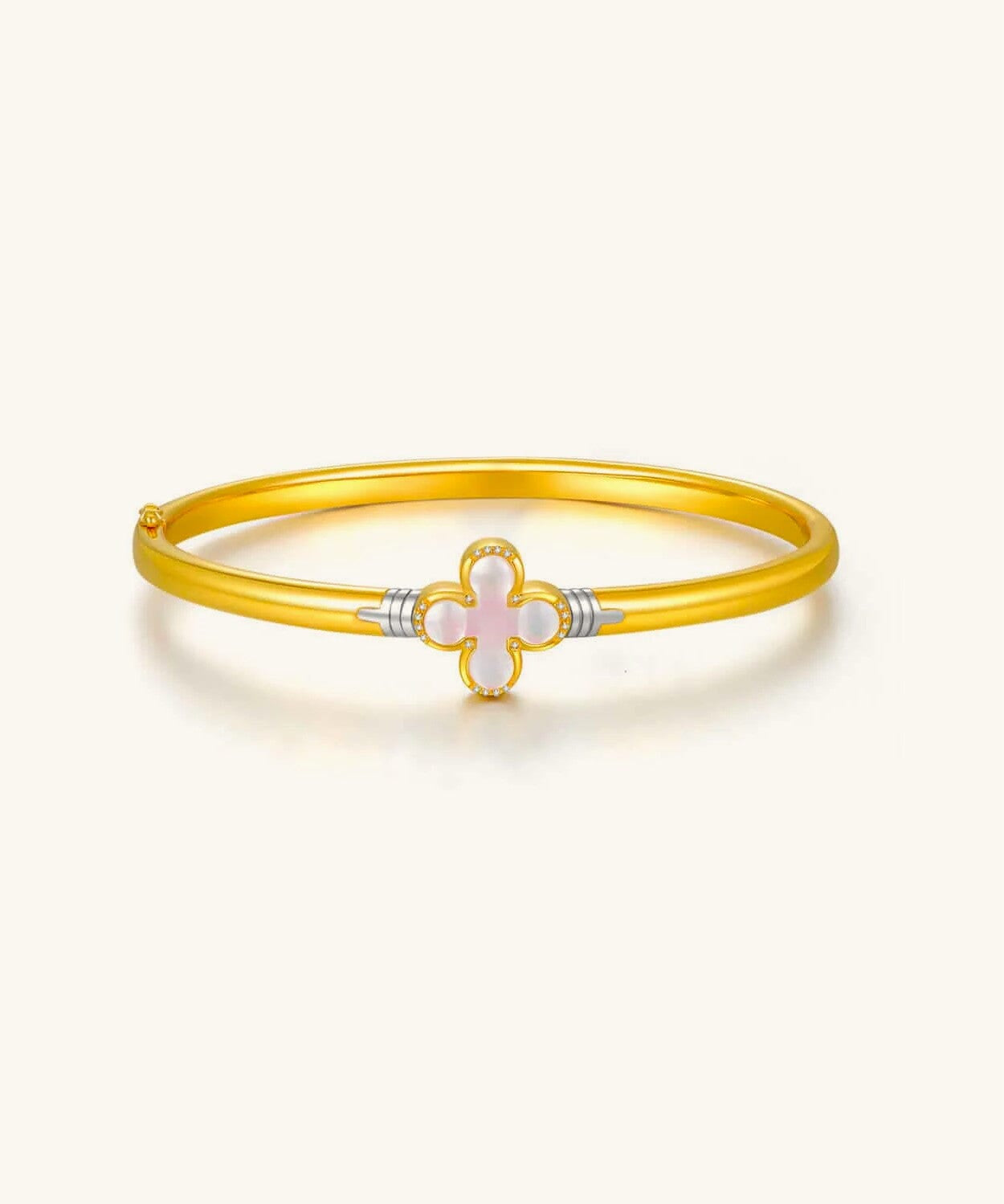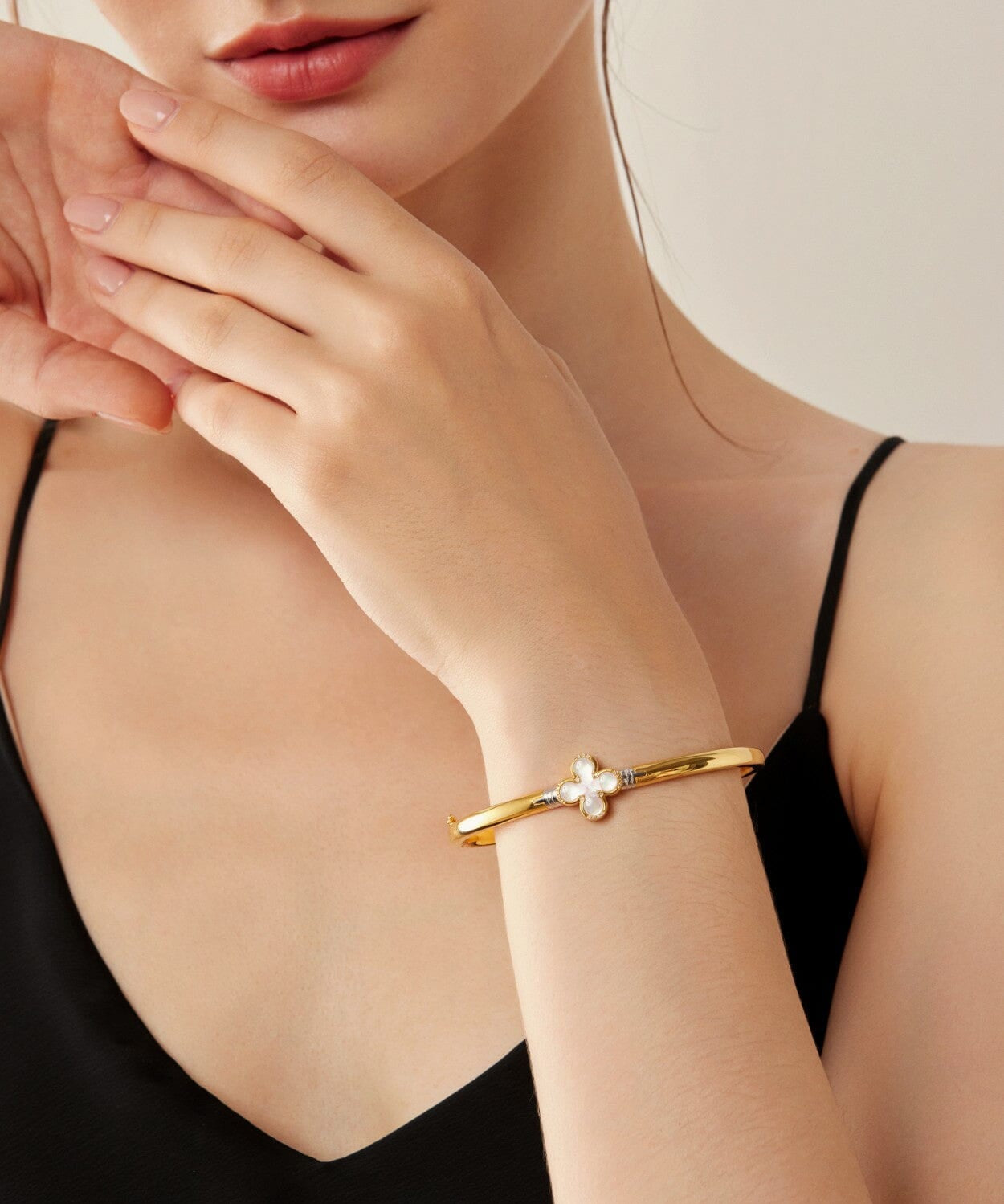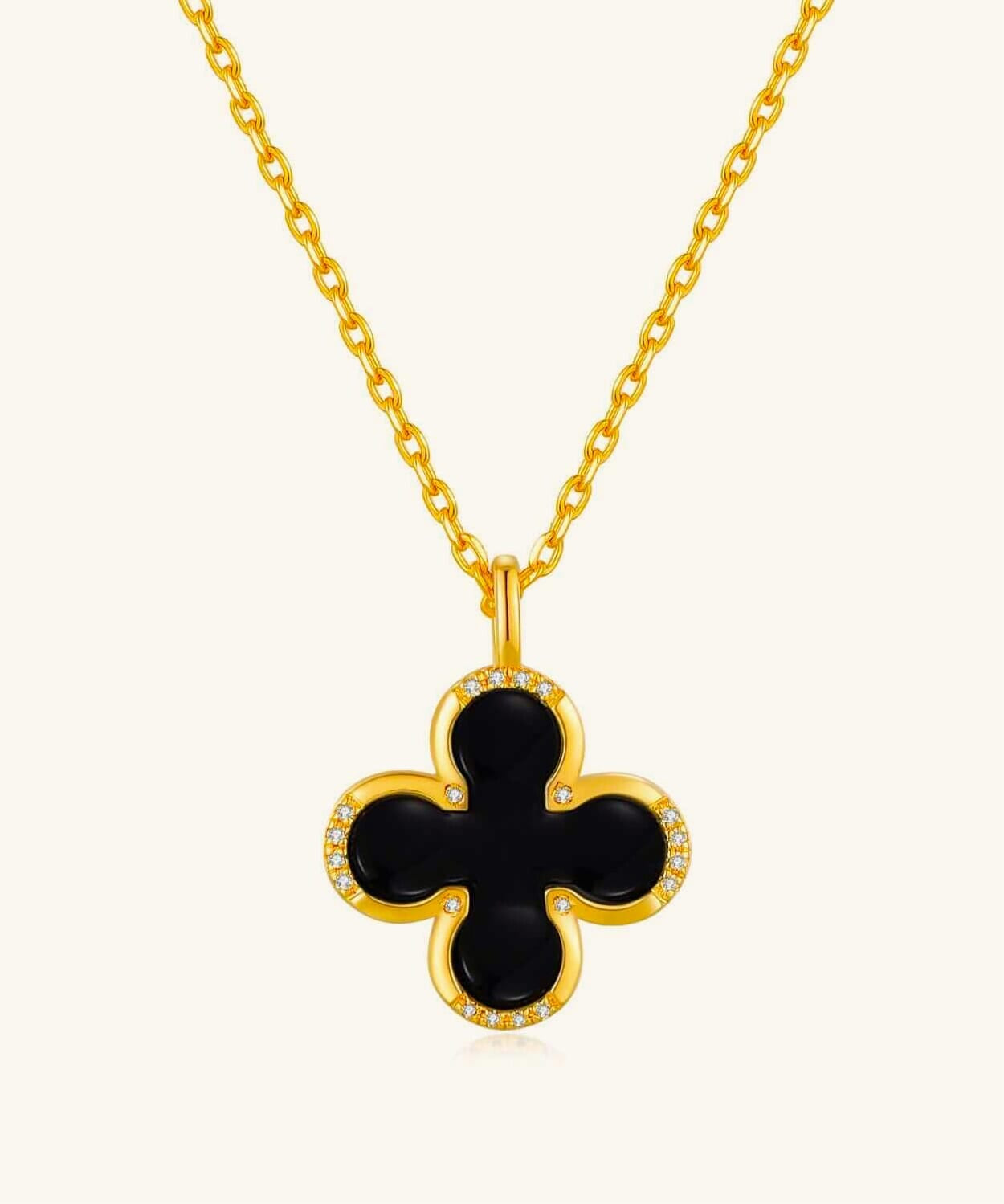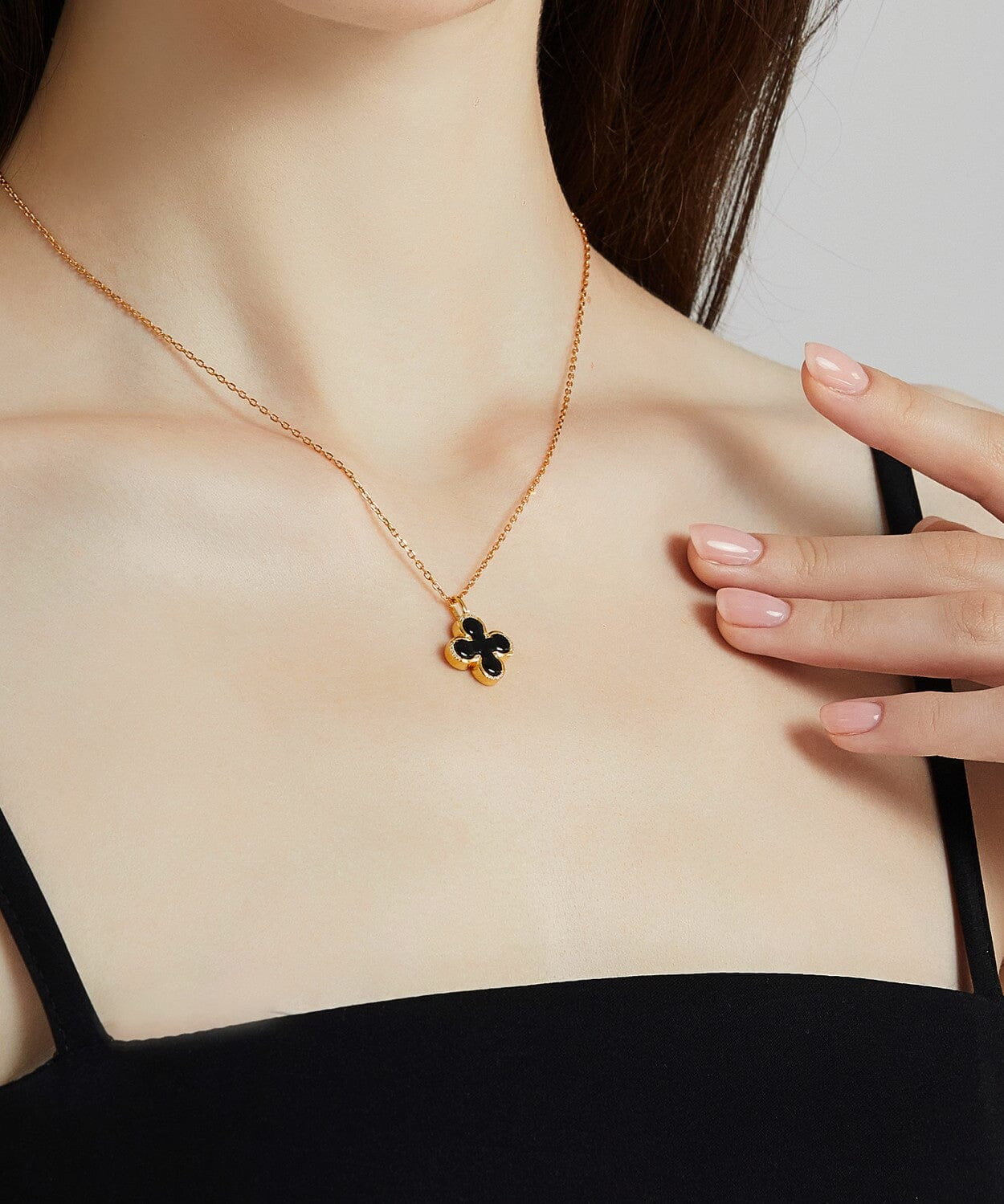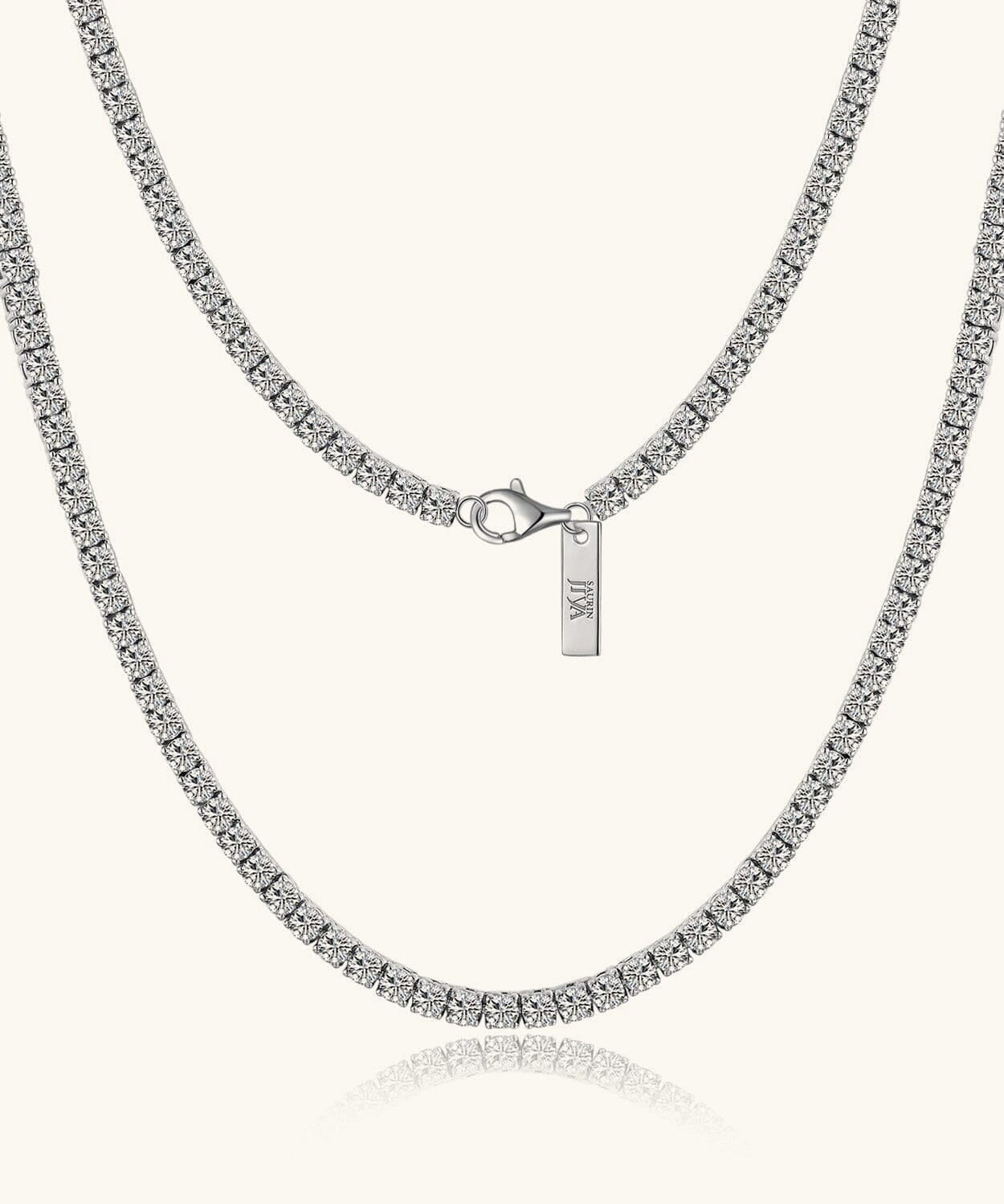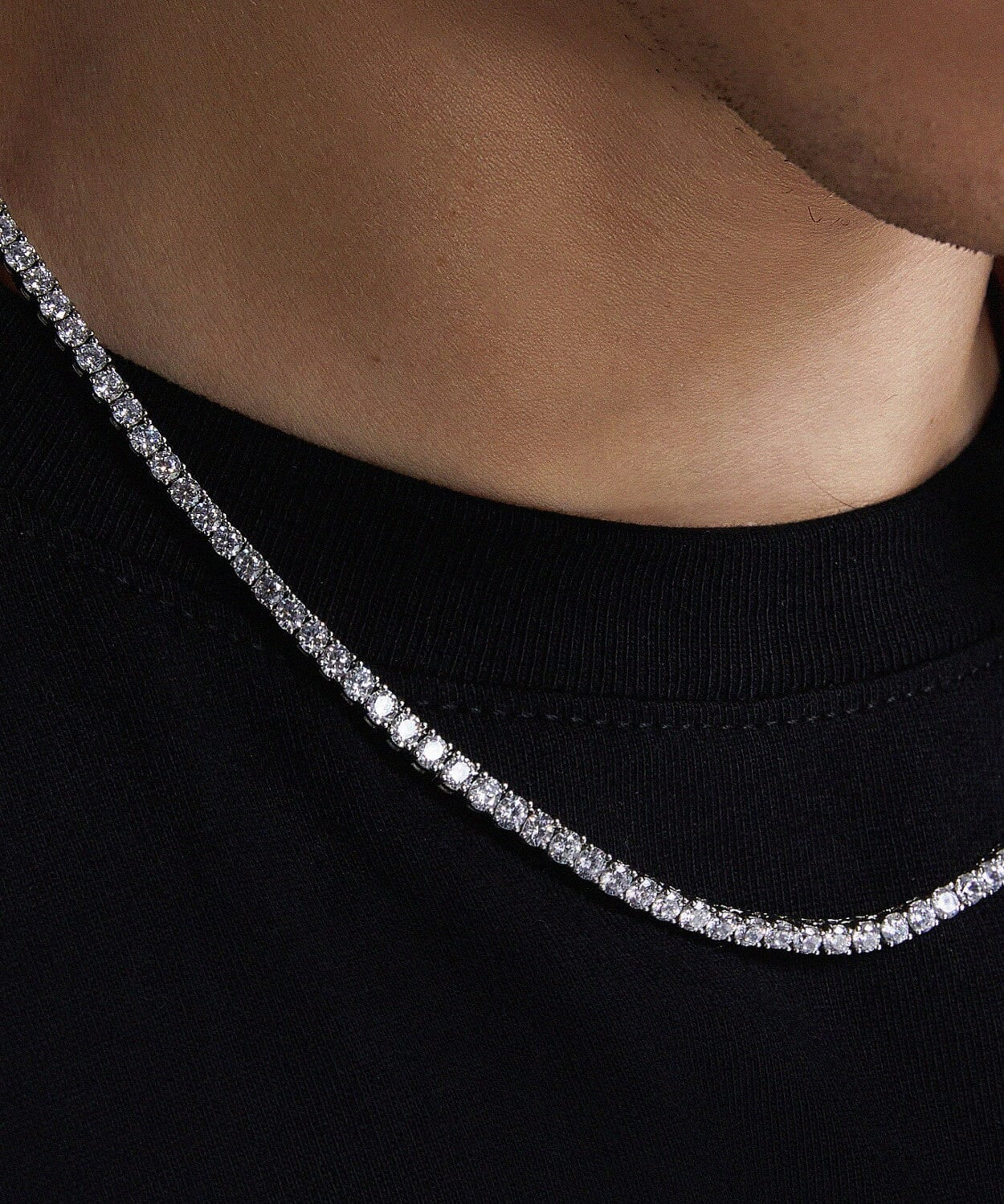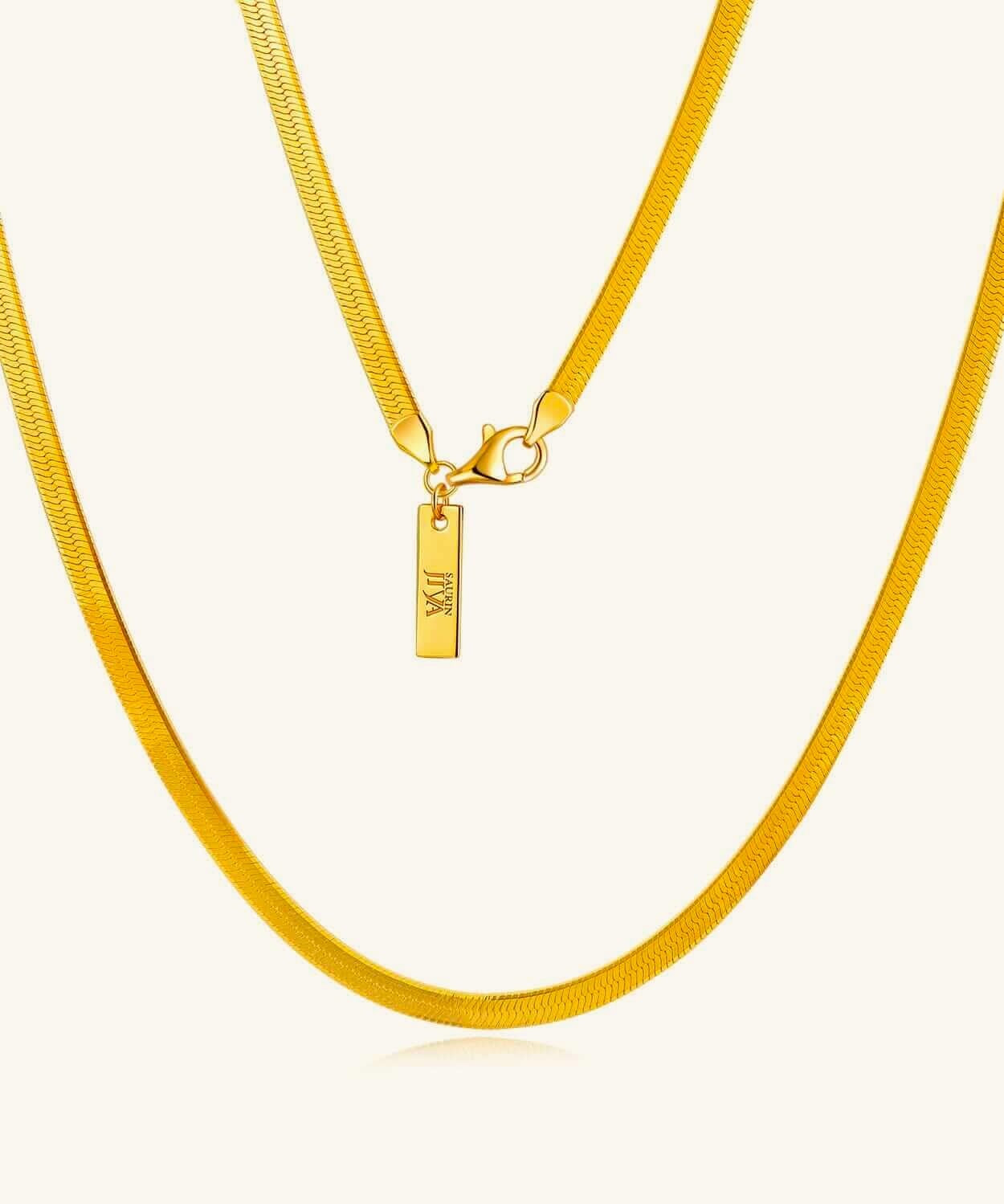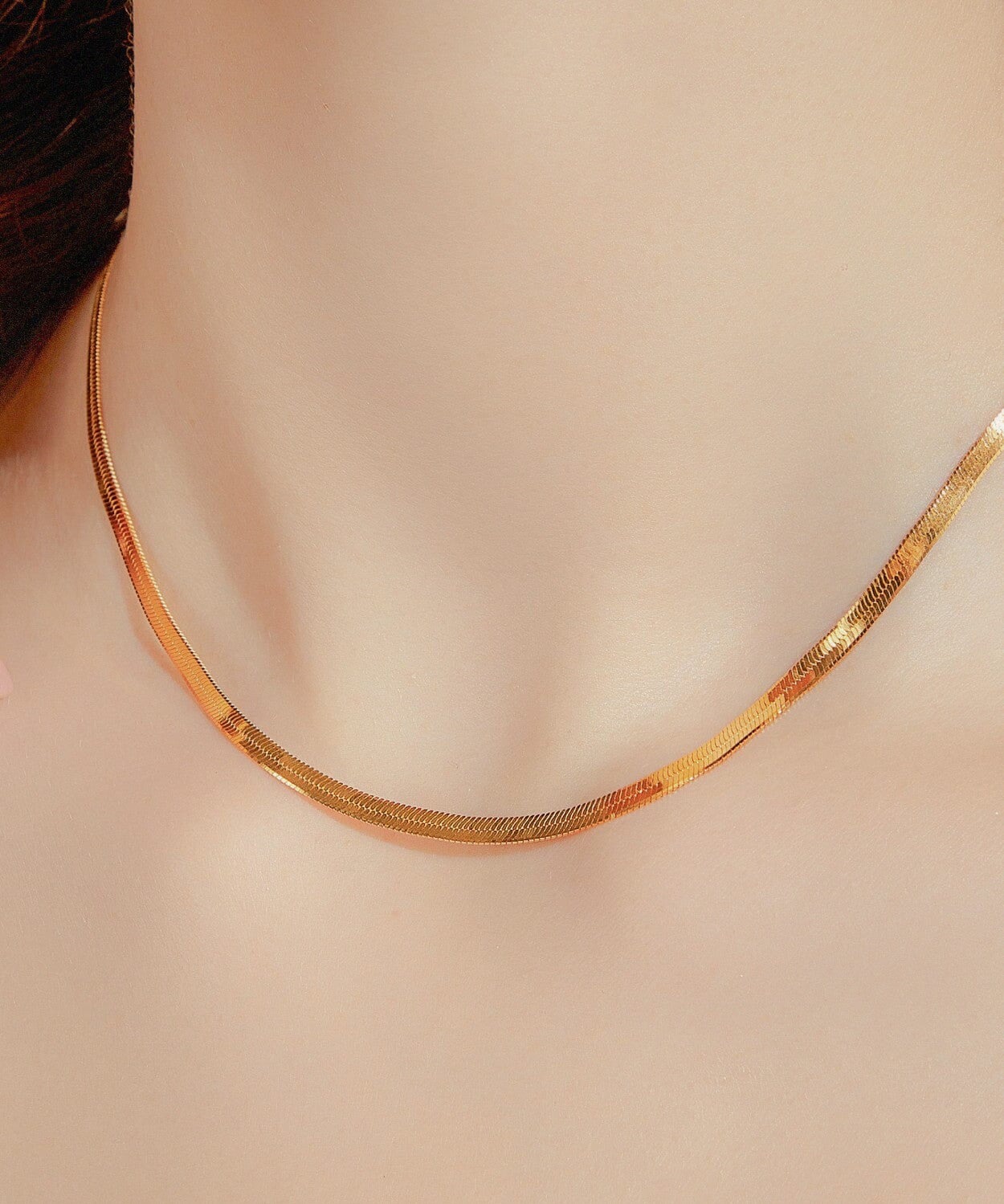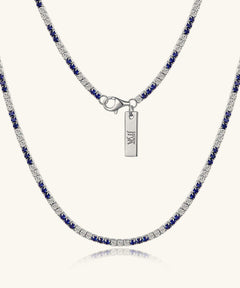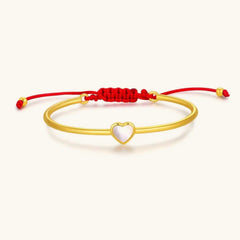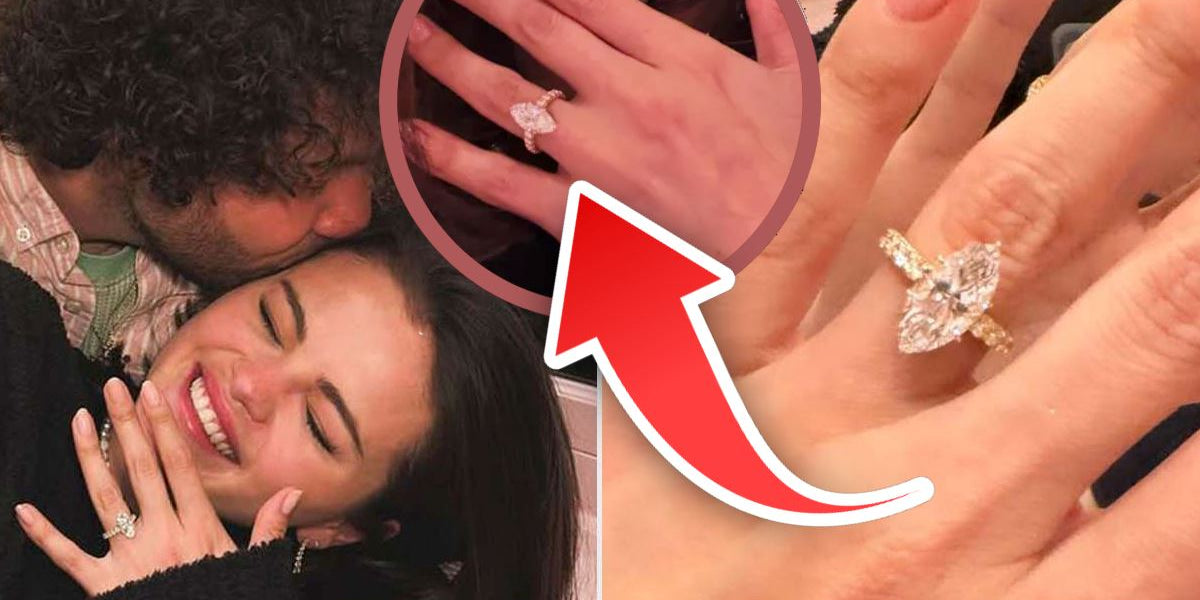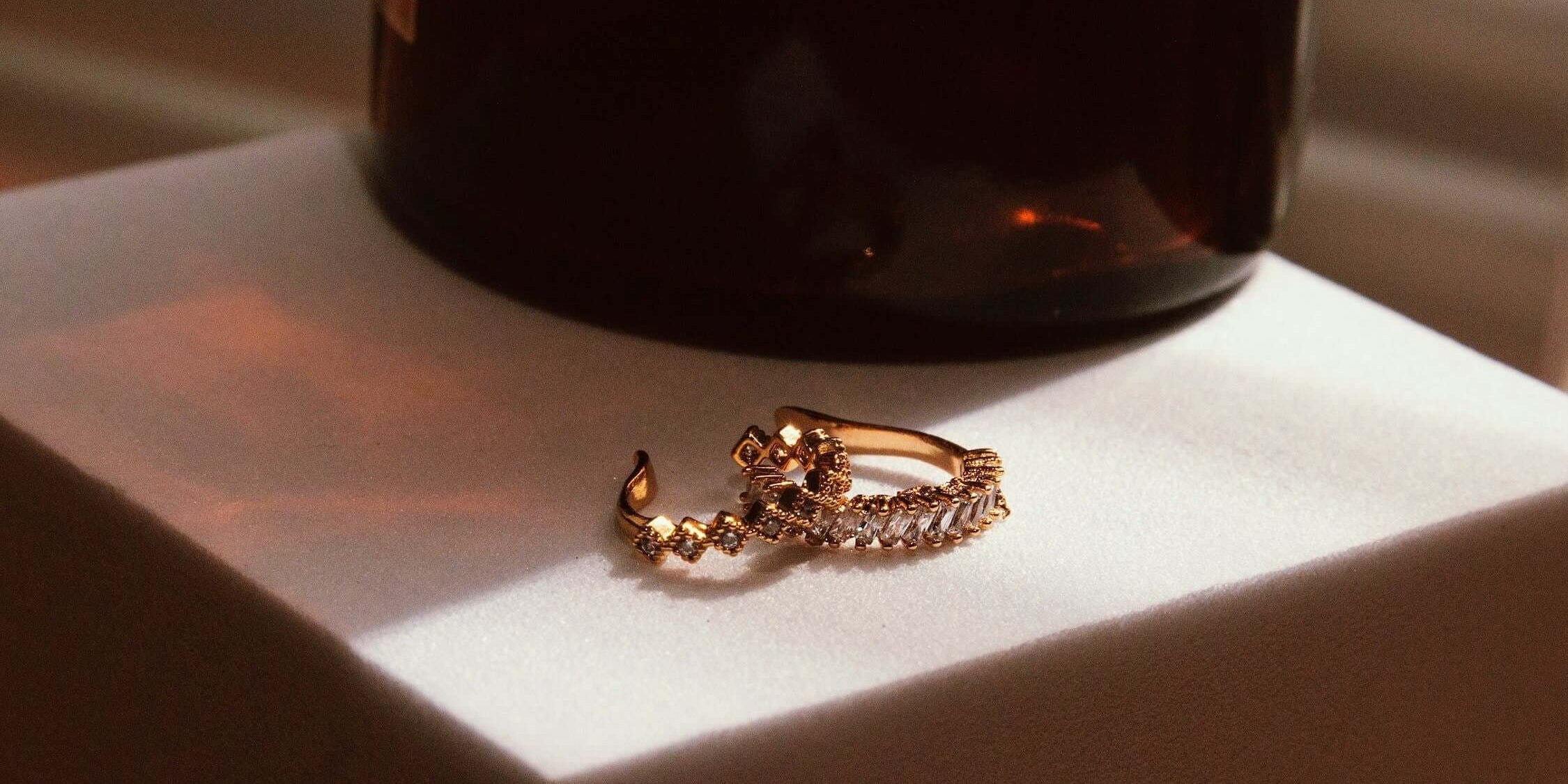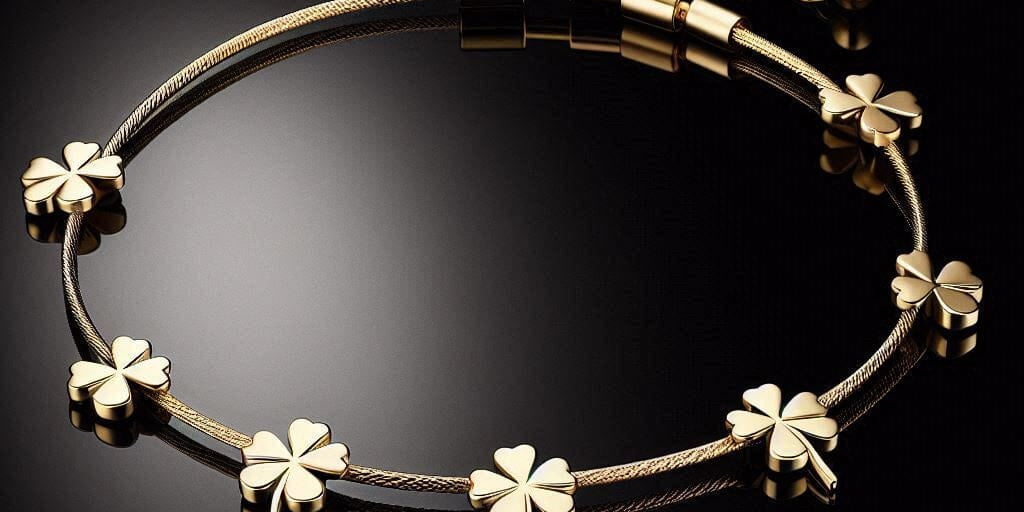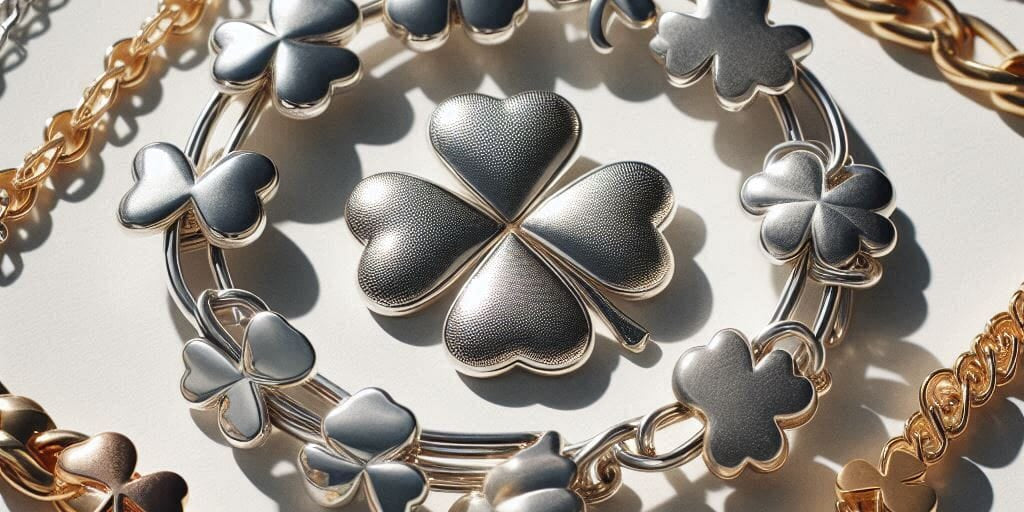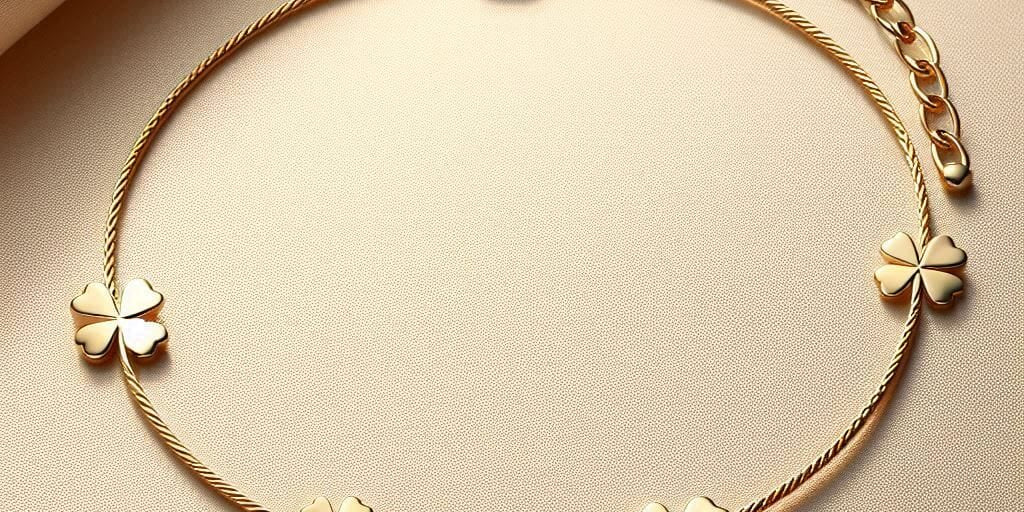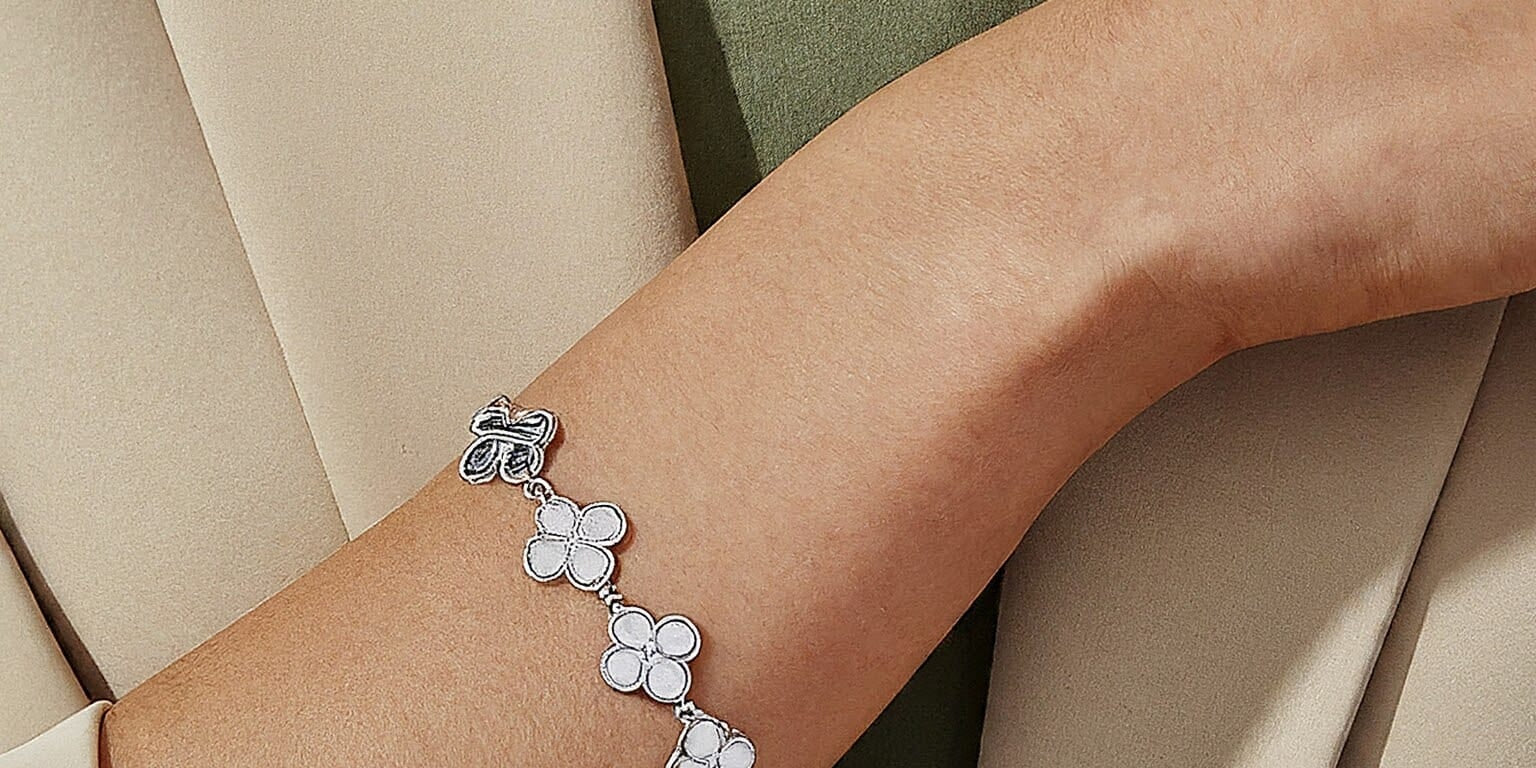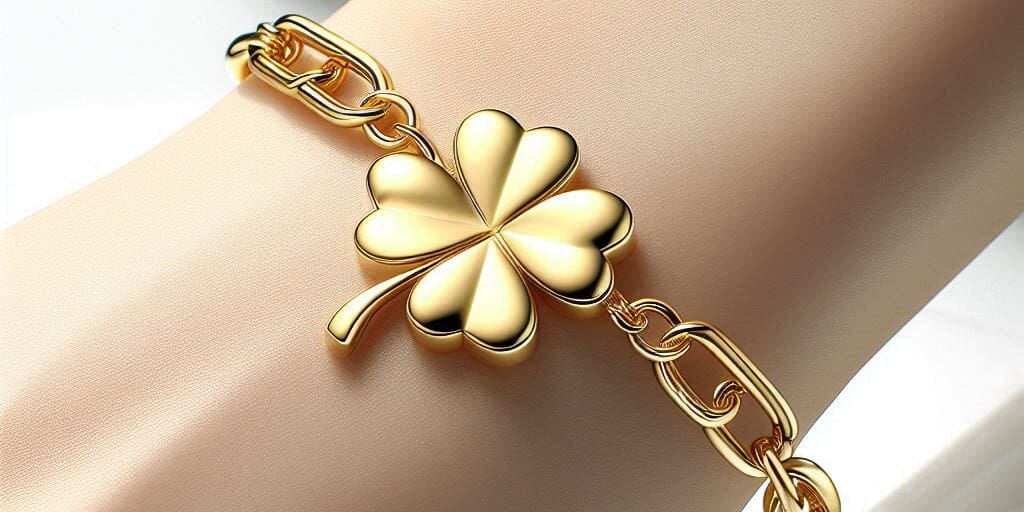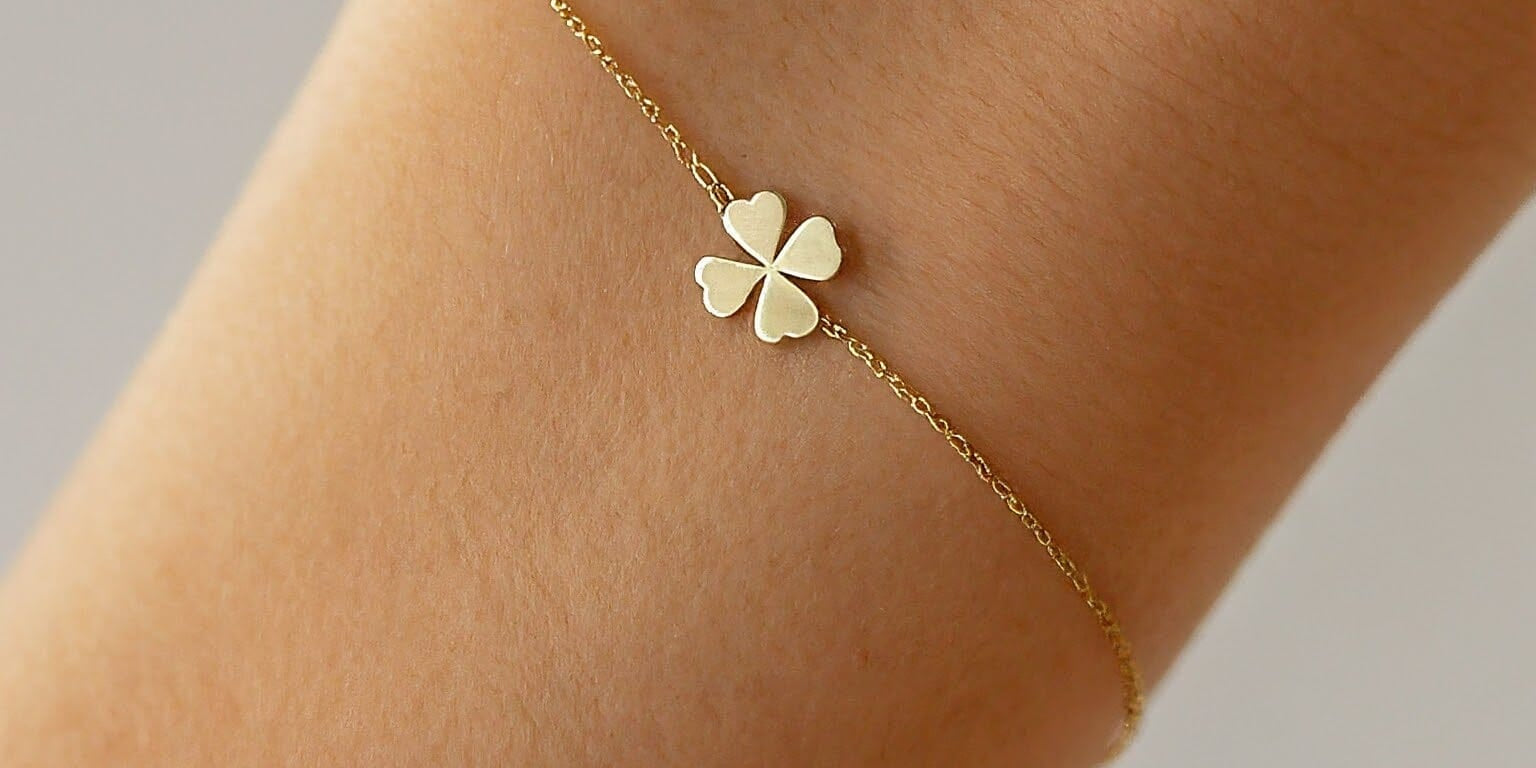Gold jewelry is much like a fine wine, both requiring precise conditions to maintain their allure over time.
Each piece, be it delicate or robust, hinges on dedicated attention to preserve its lustrous sheen and structural integrity.
This ultimate guide embodies a treasure chest of knowledge, polishing the way to impeccable care for your cherished golden adornments.
Decoding Jewelry Materials
Traversing the golden terrain, one distinguishes between diverse alloys and purities, each with unique peculiarities demanding specialized care.
The nomenclature of gold-based trinkets ranges from solid gold's ancestral pedigree to the more contemporary incarnations of plated and vermeil variants, necessitating different degrees of meticulous attention.
Terms like "gold-filled" and "gold-plated" denote distinct layering methods – keys to unlocking tailored conservation strategies.
Identifying Metal Types
Precious metals convey elegance—each distinctively marked by its composition, affording the jewelry a unique patina and character over time.
The hallmark, often found in discreet locations, reveals the metal's purity, hinting at its overall value and history.
When it comes to jewelry care, understanding the specific type of metal is paramount, as it informs the necessary maintenance protocols, from daily wear to specialized cleaning techniques.
Recognizing the intrinsic properties of your jewelry—whether it’s luxurious solid gold or the more accessible gold plated options—will guide your preservation efforts and ensure its allure for years to come.
Understanding Gemstone Qualities
Gemstones inlayed in gold add a dimension of color and life to each piece. The durability and rarity of these precious stones affect their longevity and value immensely.
Varied crystal structures and mineral compositions render each gem unique, making standardized care unfeasible. Instead, meticulous, gem-specific protocols are required to retain their inherent beauty and character.
From the Mohs hardness scale rating that influences scratch resistance to specific light refraction qualities that enhance brilliance, each gemstone demands individualized attention. Even within the same type of gem, variations in color, clarity, cut, and carat can result in differing care requirements.
Care techniques for gemstones are as nuanced as the stones themselves; for instance, emerald requires oiling to maintain luster, while opals need humidity to prevent cracking. Recognizing these diverse needs is crucial for sustaining their splendor.
Engagement rings showcase gems as central features; understanding their unique attributes is key to unlocking their lasting beauty and symbolic significance.
Daily Wear and Tear Prevention
Engagement rings and gold jewelry frequently adorn our person, seamlessly blending into the tapestry of daily life. Thus, judicious preventive measures are paramount to thwart the inevitable wear and tear they endure. Simple routines, such as removing rings before engaging in manual tasks or exposing them to harsh chemicals, can markedly extend the life of these treasures. Employing soft cloth pouches for storage, especially for pieces like gold vermeil that are more susceptible to abrasion, can preserve their resplendent finish. Vigilance in these daily practices is the silent guardian of jewelry's enduring allure.
Jewelry Handling Best Practices
Always grasp jewelry by its edges or sturdy metal parts, not by delicate chains or settings to prevent deformation or damage. This mindful approach minimizes the risk of compromising intricate designs.
Handle engagement rings by their bands, not the gemstone. This technique prevents oils from the skin accumulating on the stone's surface.
Before applying cosmetics, perfumes, lotions, or hand sanitizers, it's advisable to remove gold jewelry to avoid chemical interactions that could tarnish or erode the metal. Allowing these substances to fully absorb or dry before donning the pieces extends their pristine condition.
Rigorous activities, such as sports or heavy lifting, necessitate removing jewelry to avoid direct impacts or undue stress on the items. Ensuring a safe environment for these precious adornments, likened to that of a sanctuary, shields them from the harsh realities of daily toil. In cases where this is impractical, employ protective gear that acts as a buffer, safeguarding your valuables against inadvertent contact.
Storage Solutions for Longevity
Ensuring the brilliance of your gold jewelry extends well beyond routine cleaning; proper storage is paramount. Each piece demands an environment that mitigates exposure to elements which can precipitate deterioration or damage. Moisture, one of the most insidious agents, must be meticulously avoided to prevent tarnishing and potential corrosion.
Individual compartments within a jewelry box shield each item from scratches and abrasions. Preferably, these should be lined with a soft fabric like velvet to provide additional protection. Jewelers often recommend this approach not only to preserve the physical integrity of each piece but also to maintain their lustre.
Anti-tarnish strips, when placed inside storage areas, offer an added layer of defense. These specialized materials absorb sulfur compounds in the air, neutralizing the chemical culprits that induce tarnishing. Their placement should be strategic, ensuring that each piece benefits from their protective influence.
When traveling, portable jewelry cases designed with separate pockets are invaluable. Their structured sections prevent pieces from jostling against one another, an essential consideration to preserve delicate finishes, especially on gold plated and vermeil items. Such dedicated accessories are not an extravagance but an investment in the wellbeing of your collection.
For engagement rings and heirloom pieces, additional precautions are warranted. These treasures should be sequestered in individual soft-pouches or ring boxes, affording them extra solitude and security. It isn’t just about safeguarding an accessory—it’s about cocooning a symbol, a legacy, from the wear and tear of time.
Ultimately, the degree to which one's collection endures is contingent on storage practices. Heed these principles for they are not mere suggestions; they are the bedrock of preserving your gold jewelry’s beauty. Neglect in this respect has the power to unravel even the most meticulous cleaning efforts, leaving irreplaceable pieces diminished.
Cleaning Techniques by Jewelry Type
Gold plated items demand gentle care; excessive force or harsh chemicals harm their delicate surfaces, stripping away their luster and protective layer of gold.
For vermeil and gold filled treasures, a milder approach is necessary utilizing lukewarm water, a soft cloth, and a sparse amount of mild detergent; rubbing gently will remove accumulated grime without compromising the precious metal overlay.
Solid gold, robust as it is, should still be cleaned with a scholarly touch, using designated gold-safe solutions and non-abrasive tools to maintain its enduring glow.
Shining Precious Metals
Investment in luxurious metal finery—gold, silver, platinum—promises enduring elegance and a testament to personal style. Yet, preserving this brilliance requires knowledge rooted in the metallurgical sciences. Gold, in all its forms, mandates a gentle approach to maintenance, leveraging specific strategies honed for each variety’s particularities.
Abrasion is the nemesis of any metal's sheen, thus expertly crafted polishes are indispensable. Employ these with a prudent hand, never overlooking the choice of tool—always soft, always clean.
Indeed, the luster of precious metals stems from the microscopic smoothness of the surface. When disrupted (often invisibly), reflections fracture, leaving the metal less radiant and seemingly aged.
Fundamental to the process is knowing when to polish and when to resist; overzealous care can cause thinning of delicate gold layers, irreversibly altering your cherished pieces. Therefore, assiduous attention to usage and exposure informs the prudent owner when to engage in restorative efforts.
Every treasured item bears the heritage of expert craftsmanship, meant to be showcased rather than ensconced. Thus, it behooves aficionados to understand the nuances of routine care—ensuring pieces adapt and endure across generations, radiating their original artisanal glory.
Consequently, the most informed collectors adopt customized care routines, reflecting not just the inherent worth of their holdings but also their acute understanding of metalwork’s delicate nature. Proper stewardship guarantees that each piece's story continues to unfold for years, glowing with undiminished splendor.
Caring for Delicate Gems
Handle each gem with utmost care and respect.
When engaging in the meticulous care of delicate gems, such as emeralds, opals, or pearls, it is imperative to acknowledge their unique vulnerabilities. These precious stones are susceptible to chemicals, temperature changes, and even light exposure, which can diminish their luster or cause damage. Additionally, the physical hardness varies significantly among gemstones, influencing how prone they are to scratching or chipping during regular wear or cleaning.
Use only a soft cloth for cleaning and drying.
In the world of fine jewelry, the adage "less is more" applies - particularly in the context of delicate gems. Soft cleaning agents and minimal mechanical action are recommended to preserve the integrity and brilliance of these stones. A gentle wipe with a microfiber cloth can effectively maintain their appearance without risking abrasion or surface damage.
Avoid ultrasonic cleaners and harsh chemicals.
It is essential to refrain from using ultrasonic cleaning devices on delicate gemstones, as the vibrations can cause internal fractures or exacerbate pre-existing ones. It is equally crucial to avoid contact with harsh chemicals that can etch or deteriorate their surfaces. In the most scrupulous approach, professional assessments by gemologists should occur biannually, ensuring the ongoing integrity of settings and the welfare of each captivating gemstone.
Professional Maintenance Essentials
Beyond routine personal care, enlisting the expertise of seasoned jewelry professionals is paramount in maintaining the grandeur and longevity of your gold jewelry. It is advisable to schedule professional cleanings and inspections at least once a year, which provide an opportunity for specialists to address any potential issues before they exacerbate. Precise tools and techniques are employed to meticulously restore each piece’s luster, ensuring that every facet gleams with the splendor it held at first wear.
In parallel to the physical maintenance, a seasoned jeweler's keen eye can discern the need for preventative measures, functioning as a veritable "guardian" of your collection's well-being. Whether it involves the reinforcement of a gold vermeil piece or micro-adjustments on the prongs of an engagement ring, these expert interventions act as safeguards against future damage. By investing in these professional services, you fortify the legacy of each piece, allowing them to be treasured and worn with confidence for generations to come.
When to Seek Expert Cleaning
Certain situations necessitate the expertise of skilled jewelers to clean and restore gold jewelry to its original state.
- When jewelry has substantial build-up of grime that cannot be removed with gentle at-home cleaning.
- If the piece has intricate designs or setting where dirt can be trapped and is hard to reach.
- In the event of mechanical damage, such as a bent prong or a loose setting, that may worsen during cleaning.
- When stones present in the jewelry (e.g., diamonds in engagement rings) require professional-grade cleaning solutions.
- If the piece is an heirloom or of significant value, warranting specialized care.Professional jewelers have the requisite tools and solutions to carry out a meticulous clean without harming the piece.Expert cleaning is particularly recommended before significant events where the jewelry will be showcased.
Routine Inspection for Pristine Condition
Inspect your jewelry often for signs of wear.
Routine inspections are foundational to jewelry care. At least once a month, take a moment to examine your pieces under good lighting, looking for any signs of damage or wear. This proactive approach can reveal issues early on, such as loose stones or weakened clasps, which might otherwise lead to unfortunate loss or further damage. Promptly addressing identified concerns ensures the enduring beauty and structural integrity of each precious item.
Check for loose stones, scratches, or tarnishing.
Meticulous care extends to the clasps and settings. Over time, even a well-crafted jewelry item can experience natural wear, potentially leading to a weakened clasp or a stone that is less securely set. By routinely checking these critical components, one can preemptively address such issues, safeguarding against the inadvertent loss of stones or the piece itself.
Maintain a schedule for professional check-ups.
And don't underestimate the value of professional oversight. Just as one consults a specialist for fine art or antiques, periodically bringing your jewelry to a qualified jeweler - perhaps annually or biannually - for an expert assessment and professional cleaning can be invaluable. This critical attention ensures that each piece retains its illustrious sheen and that intricate mechanisms are maintained to the highest standards. In the ever-evolving world of luxury care, adapting to cutting-edge techniques and products is indispensable for preserving your collection's legacy.
Schedule annual professional cleanings to ensure longevity.
Equally, remember that the craft of jewelry is not static; as approaches to care and maintenance evolve, staying informed is critical. Professional jewelers can provide updates on the latest practices and products, which can be especially pertinent given the advancements in the industry. Regular expert evaluations can also offer peace of mind that your cherished pieces are resilient and ready to be worn on all occasions, or preserved as heirlooms for future generations.
Regularly clean and care for your gold jewelry using the provided tips to maintain its beauty. Consider using recommended cleaning products or professional jewelry cleaning services for optimal results. Take action and care for your gold jewelry to keep it shining and beautiful.
How often should I clean my jewelry?
Cleaning your jewelry regularly is essential to maintain its beauty and sparkle. The frequency at which you should clean your jewelry depends on various factors such as the type of jewelry, how often you wear it, and the environment it is exposed to.
For delicate jewelry pieces such as fine gold or platinum jewelry set with precious gemstones, it is recommended to clean them every three to six months to keep them in pristine condition. This frequency ensures that any dirt, oils, or residue that may accumulate on the surface are promptly removed, preventing potential damage.
For everyday jewelry like engagement rings, wedding bands, or diamond stud earrings, it is advisable to clean them more frequently, ideally once a month or every few weeks. This is because these pieces are often exposed to more dirt, oils, and sweat due to their regular wear. Regular cleaning will help maintain their brilliance and keep them looking their best.
If you live in a humid climate or frequently engage in activities that expose your jewelry to sweat, dirt, or chemicals, you may need to clean your jewelry more often. Perspiration and chemicals can gradually tarnish metal and dull gemstones if not properly cleaned, so it is important to pay extra attention to these pieces.
It's worth noting that certain types of jewelry, such as pearls or antique pieces, require specialized cleaning techniques and should be handled with care. Pearls, for example, are porous and delicate, so they should be gently wiped with a soft cloth after each wear rather than submerged in water.
Additionally, always consider using appropriate cleaning solutions specifically formulated for jewelry cleaning. Avoid harsh chemicals or abrasive materials that can damage the metal or gemstones.
In summary, regular cleaning is crucial to preserve the beauty and longevity of your jewelry. By following these guidelines and adapting the frequency of cleaning to your specific circumstances, you can ensure that your precious pieces continue to shine and enchant for years to come.
Can I wear my jewelry in water, like when bathing or swimming?
Wearing jewelry in water, such as when bathing or swimming, can be a somewhat controversial topic among jewelry enthusiasts. While it may seem tempting to keep your precious pieces on at all times, it's important to consider the potential risks involved.
Water can present various challenges to the integrity of your jewelry, especially if it contains delicate gemstones or intricate settings. Exposing jewelry to water can potentially weaken the prongs holding gemstones in place, leading to a higher risk of stones becoming loose or even falling out.
In addition to this, certain metals and materials used in jewelry can also be affected by water exposure. For example, prolonged contact with water can cause sterling silver to tarnish or gold to become dull.
However, it's worth noting that not all jewelry is created equal and some pieces are more suitable for water-related activities than others. Water-resistant or waterproof watches, for instance, are specifically designed to withstand moisture and can often be safely worn during swimming or bathing.
To determine whether it is safe to wear your jewelry in water, it is best to consider the specific characteristics of each piece. Consulting with a professional jeweler is highly recommended, as they can provide expert advice and assess the potential risks associated with water exposure for your jewelry.
Overall, while it may be understandable to want to wear your jewelry at all times, it is generally advisable to remove your jewelry before engaging in activities involving water. This precaution can help to preserve the integrity and beauty of your jewelry in the long run, ensuring that it continues to shine for years to come.
FAQ
Gold Jewelry Care: Expert Tips for Preserving Your Fine Pieces
What types of gold jewelry does this guide cover?
This guide covers the care and cleaning of gold plated, gold vermeil, gold filled, and solid gold jewelry, including engagement rings.
How do I clean gold plated jewelry?
To clean gold plated jewelry, use gentle cleaning methods and avoid excessive wear to maintain the gold plating. Follow these tips for proper gold plated jewelry care including how to maintain gold plating and use gentle cleaning methods.
What is gold vermeil and how do I maintain it?
Gold vermeil is a type of gold jewelry to preserve vermeil jewelry, and the best methods for cleaning gold vermeil.
How do I care for gold filled jewelry?
Gold filled jewelry is durable and long-lasting. To care for it, clean and store the pieces properly to maintain their shine. Discover the secrets of gold filled jewelry care to keep it long-lasting, and the best ways to clean gold filled pieces.
What are the maintenance needs for solid gold jewelry?
Solid gold jewelry requires regular cleaning and maintenance to keep it in pristine condition. This section provides comprehensive advice, particularly for engagement ring maintenance and cleaning solid gold. Learn how to properly clean solid gold, care for your solid gold jewelry, and maintain your engagement rings.
How do I care for my gold engagement ring?
Proper care for gold engagement rings is crucial. Regular cleaning and professional check-ups are essential to preserve their beauty and longevity. Discover the best practices for engagement ring care, how to clean gold rings, and how to preserve engagement rings for a lifetime.
Why is appropriate care important for gold jewelry?
Appropriate care ensures the longevity and pristine condition of gold jewelry. By following these tips, you can maintain the beauty and shine of your cherished pieces. Learn why gold jewelry care is essential and how it helps preserve your fine pieces.
How can I motivate myself to care for my gold jewelry?
Regularly clean and care for your gold jewelry using the provided tips to maintain its beauty. Consider using recommended cleaning products or professional jewelry cleaning services for optimal results. Take action and care for your gold jewelry to keep it shining and beautiful.
